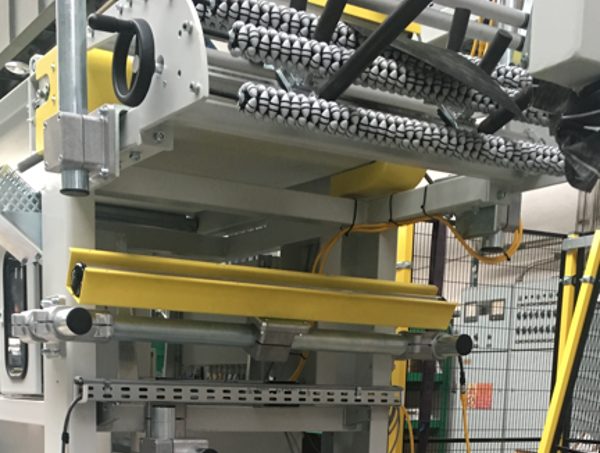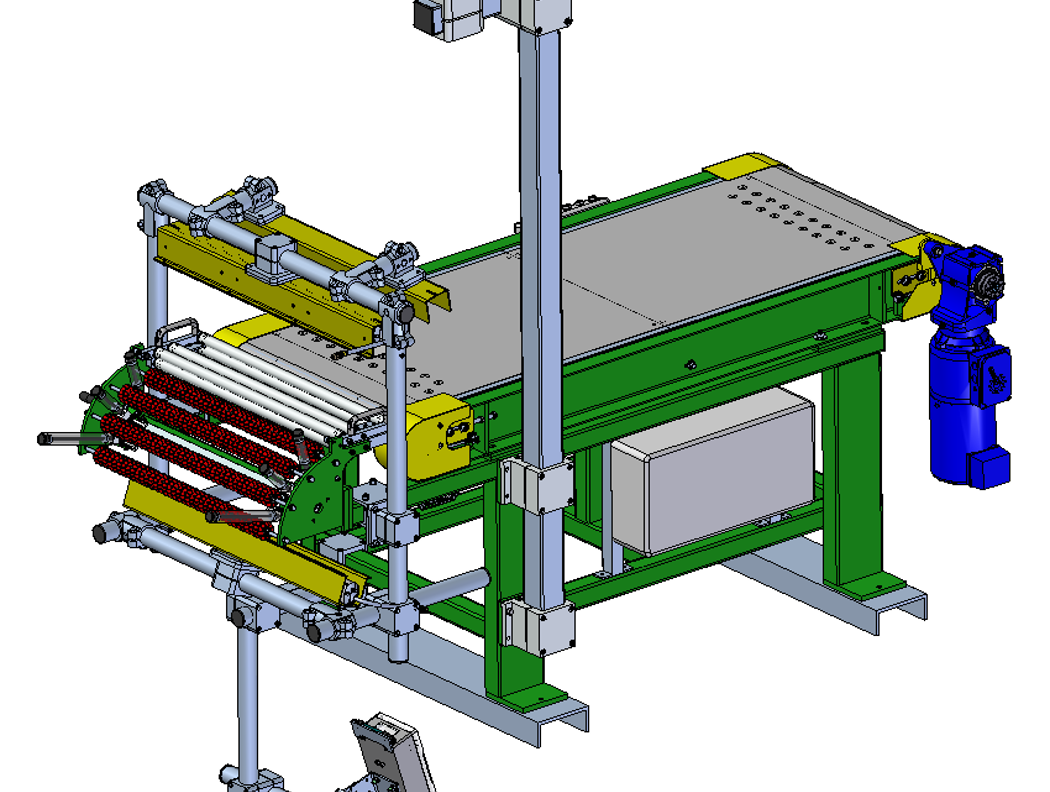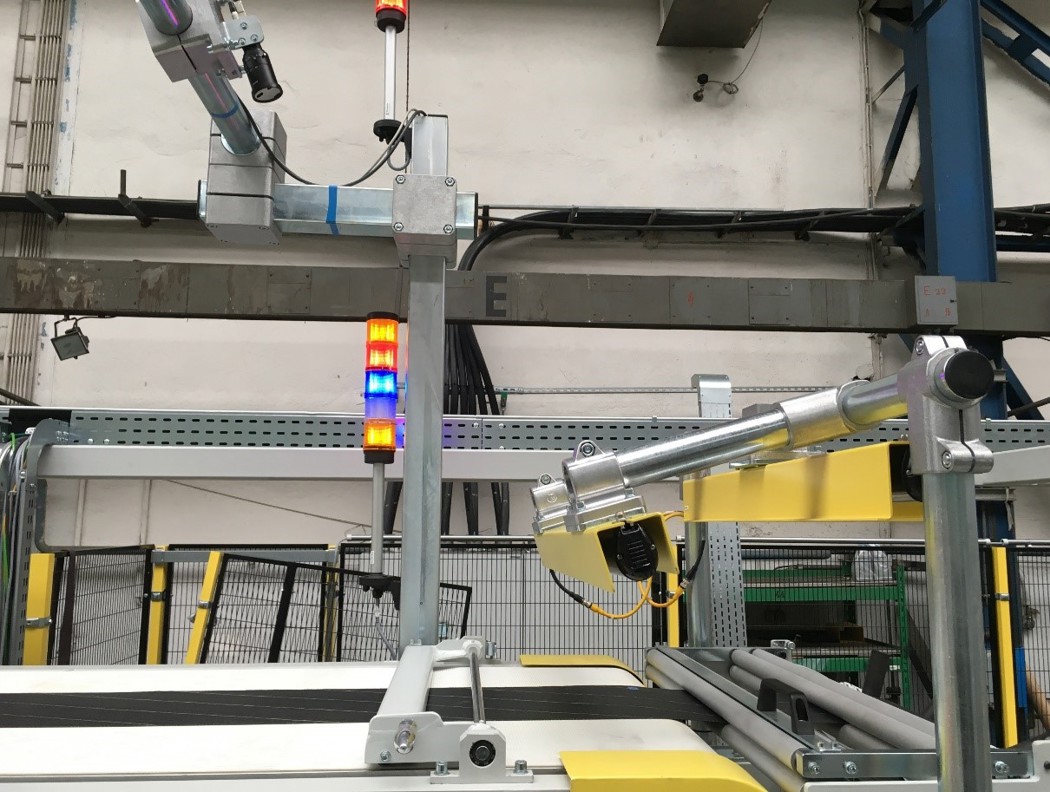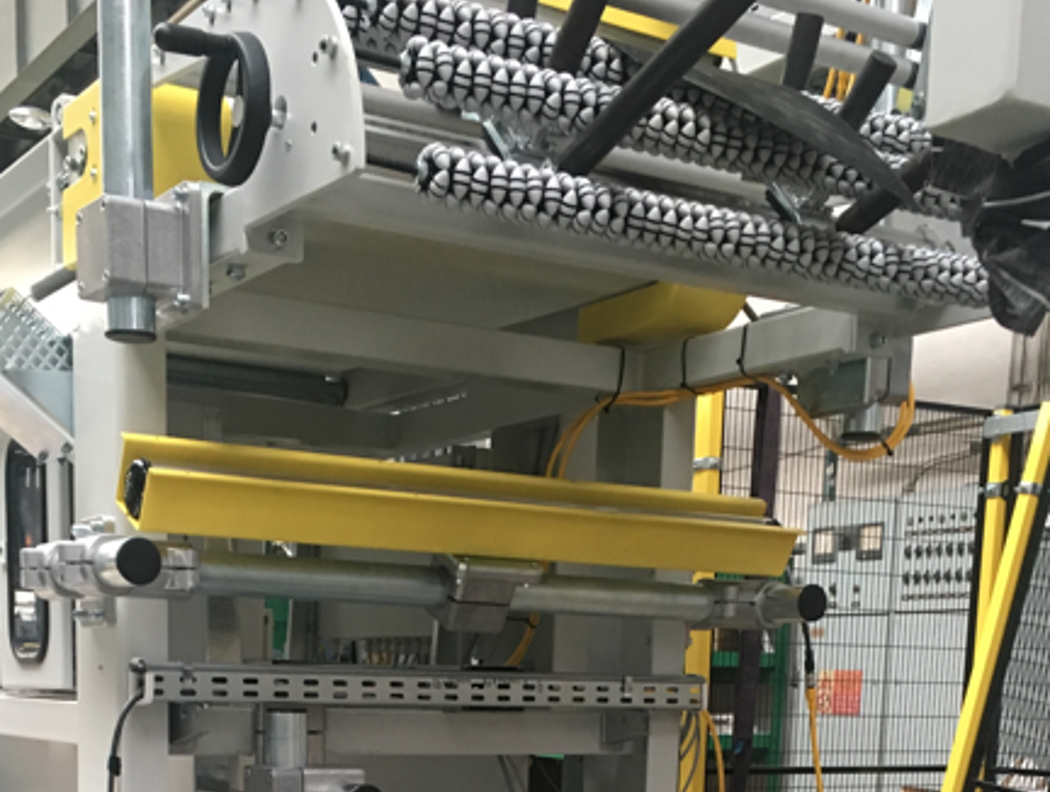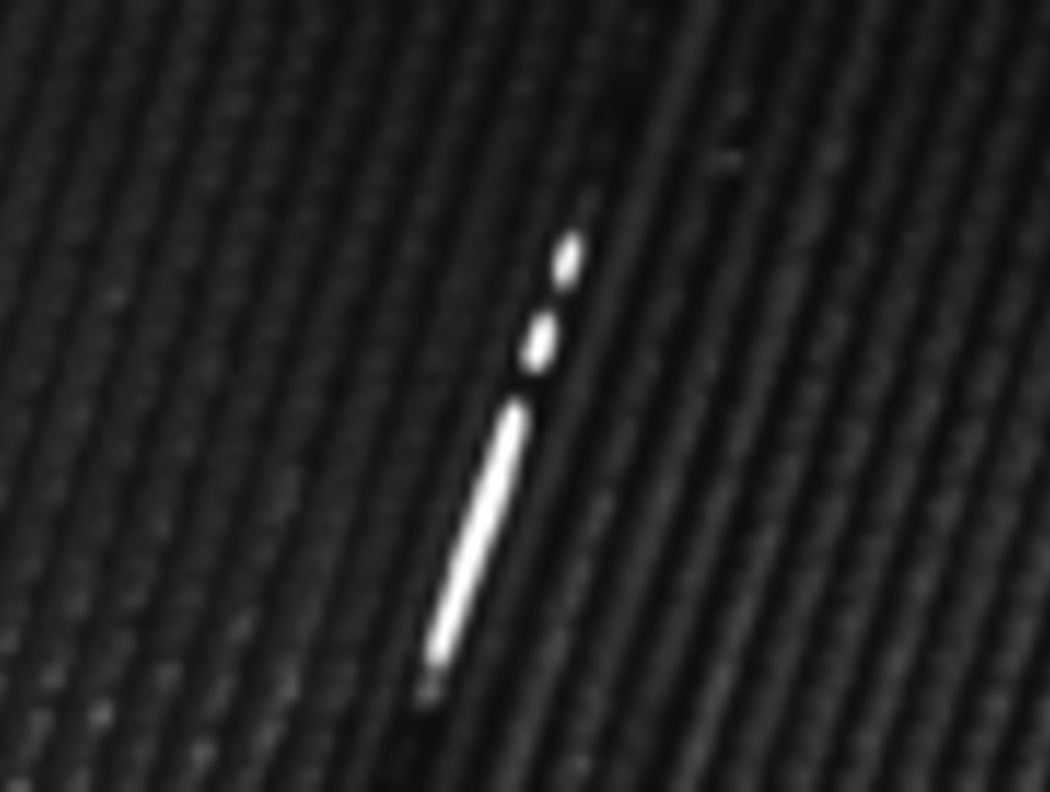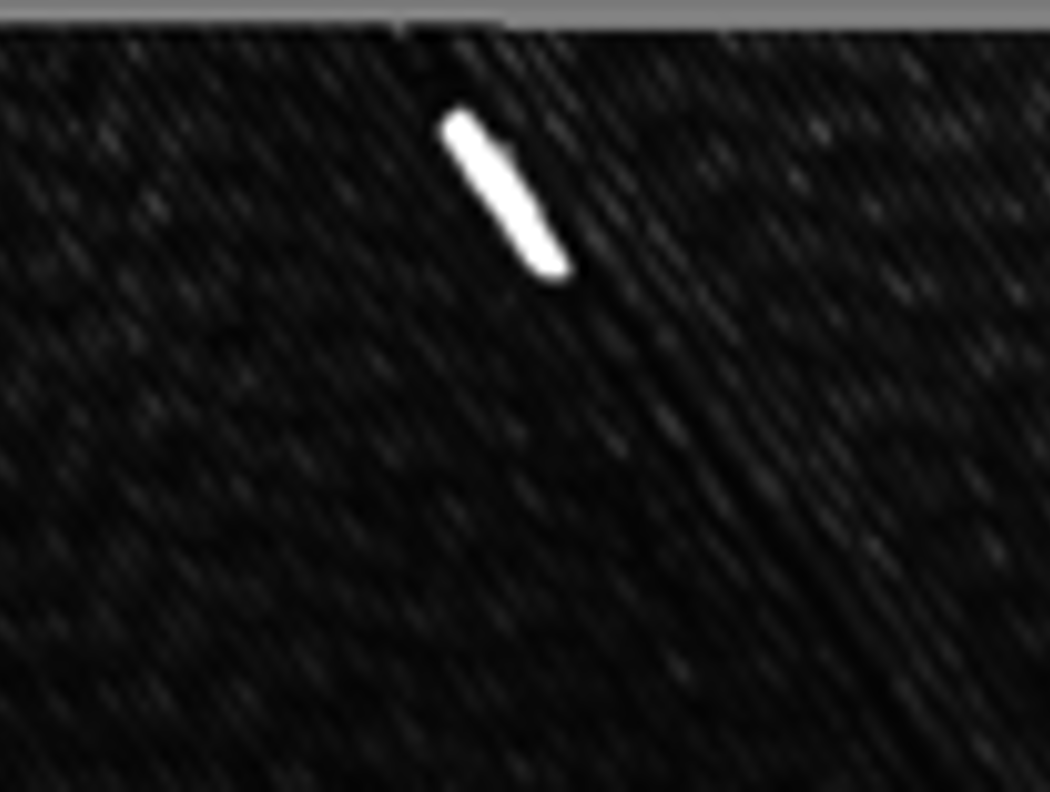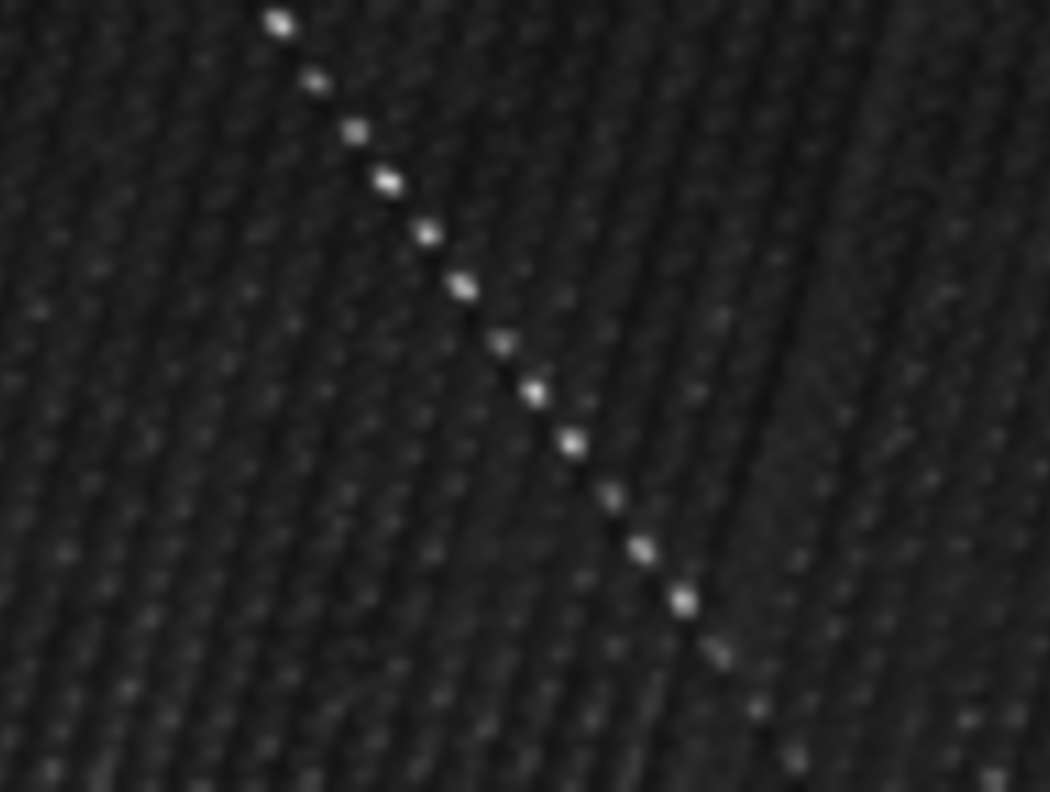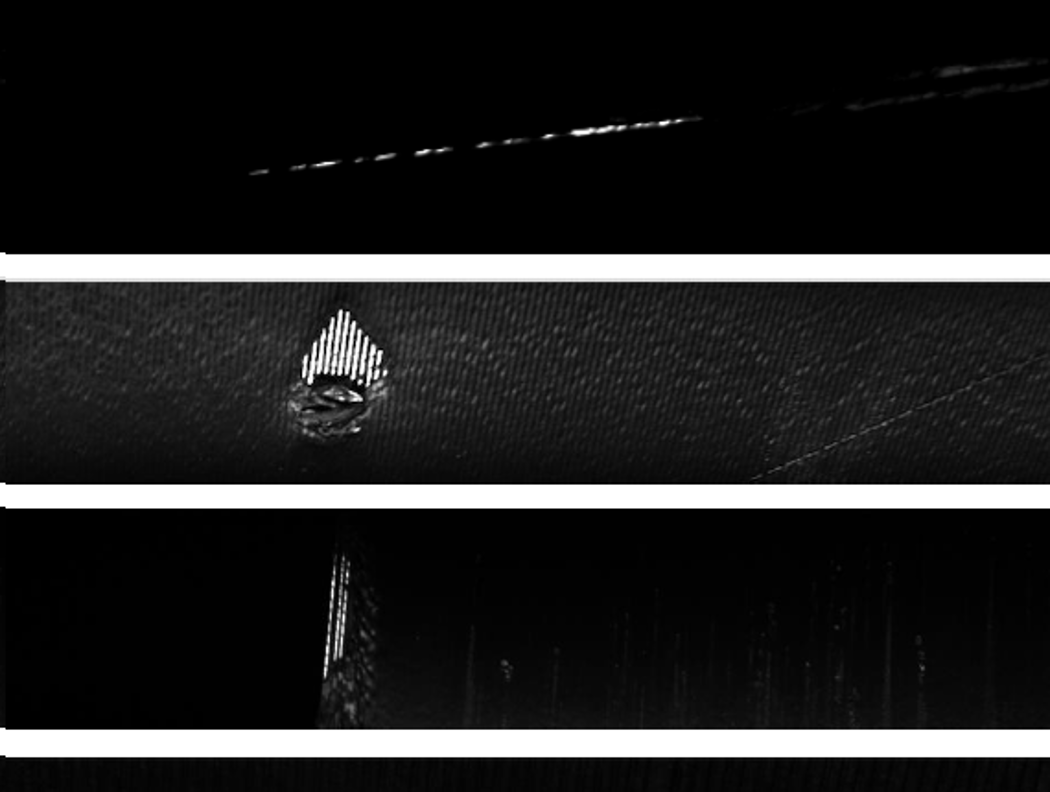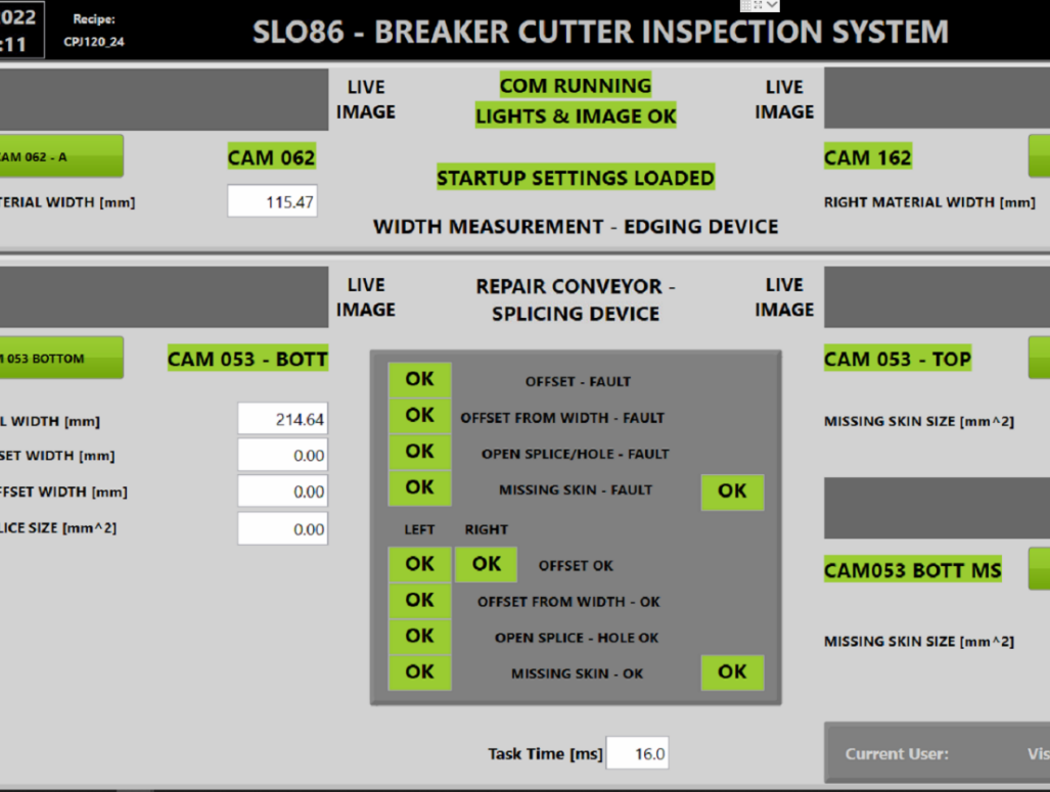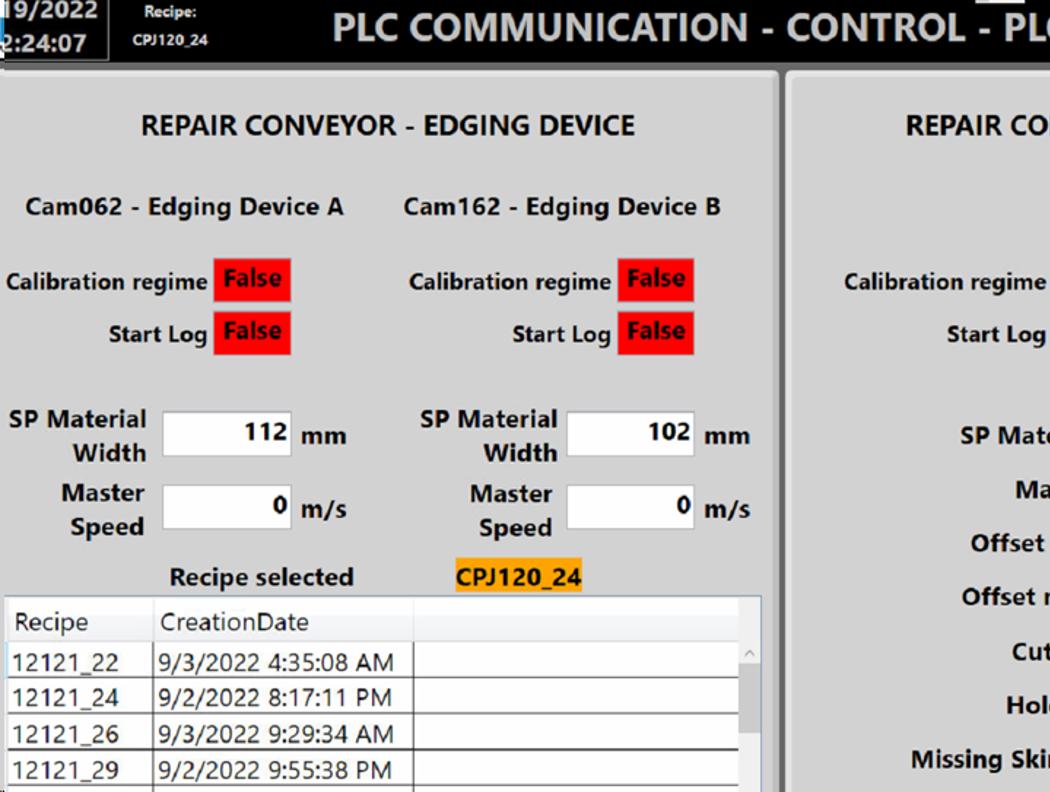Measuring system for rubber steel cord cutting machine
Our customer produces rubber steel cords for further tire production. The material differs in width, angle of cut, viewing surface. Incorrectly connected rubber (open splice, holes, offsets) and production defects (missing skim) lead to malfunctions in the next production process.
Challenge:
Our customer produces rubber steel cords for further tire production. The material differs in width, angle of cut, viewing surface.
Incorrectly connected rubber (open splice, holes, offsets) and production defects (missing skim) lead to malfunctions in the next production process. Occasional inspections by employees are not effective enough to detect material defects. Quality control of production is also not possible without slowing down the material flow. This leads to an uncontrolled and unwanted shutdown of production.
The following defects occur:
- Open joints (holes)
- Material width deviation
- Missing skim of steel cords
- Offsets out of tolerance.
Proposal:
In order to improve the production process, the decision was made to use modern technologies of industrial image processing and vision system communication with the line, so that when defect is detected, the line stops automatically. There is also the option of an independent system with a separate monitor and siren.
The system should work for different selected recipes and conveyor running speeds.
Solution:
Automated machine vision quality control has been established with the following components:
- Industrial computer
- Cameras: Cognex CIC 2000
- Lights: Red backlights + polarized light to reduce unwanted reflections.
- Machine Vision Software: Cognex
- Communication with PLC: Ethernet/Ip or PROFINET. Other protocols are also possible.
The material is checked from both sides by 2 bottom and 1 top camera.
HMI:
The HMI is designed to allow the user to easily and quickly set up new recipes, go through an archive of results, check signals sent or received from the PLC or view a live image from a camera. The system also stores a photo of each defect and writes program logs to the database for easier verification of the application's status.
The result:
- Reduction of downtime
- Significant reduction of defects in production
- Increasing the quality of products for the consumer
- Statistics of production defects



